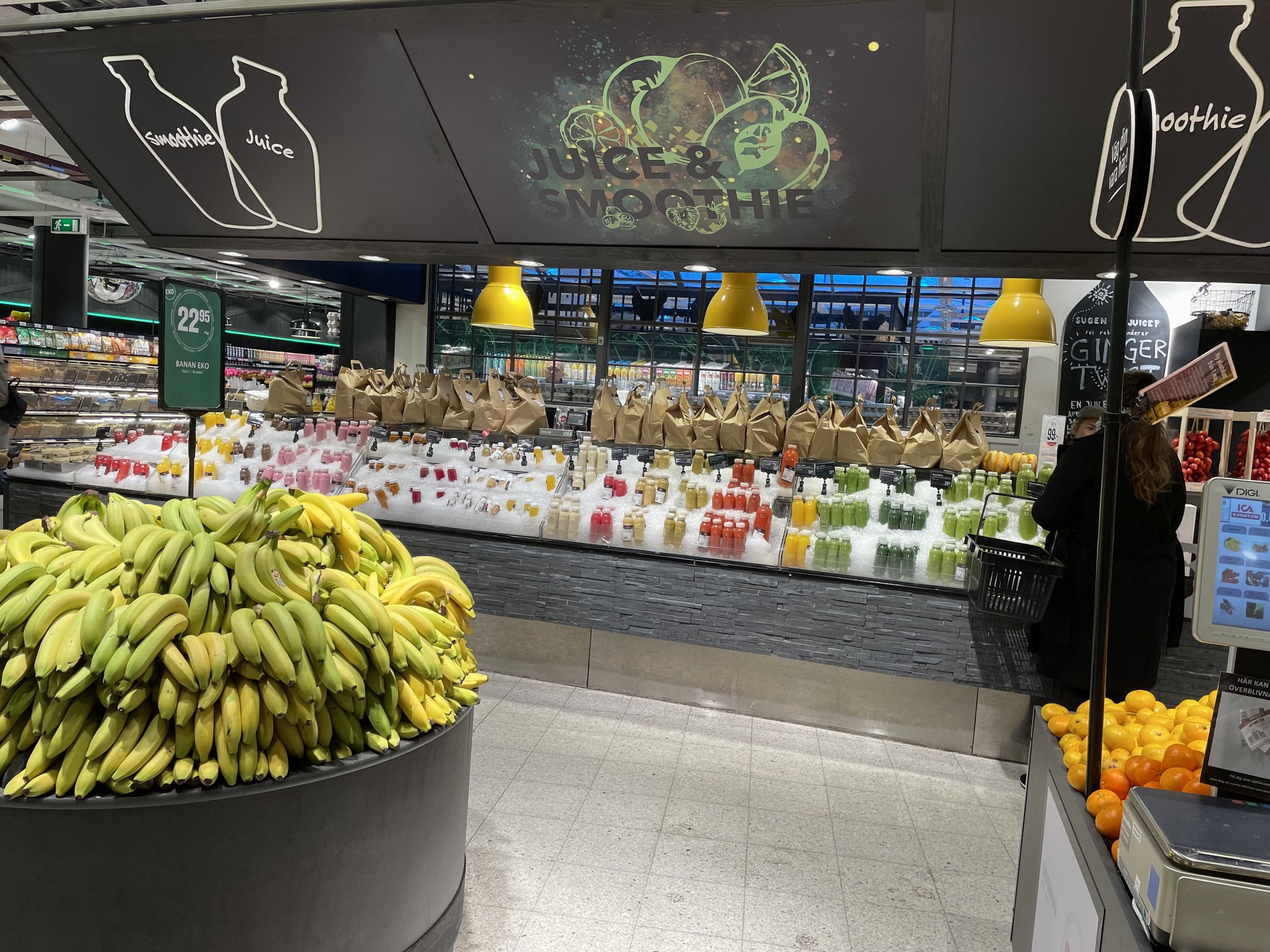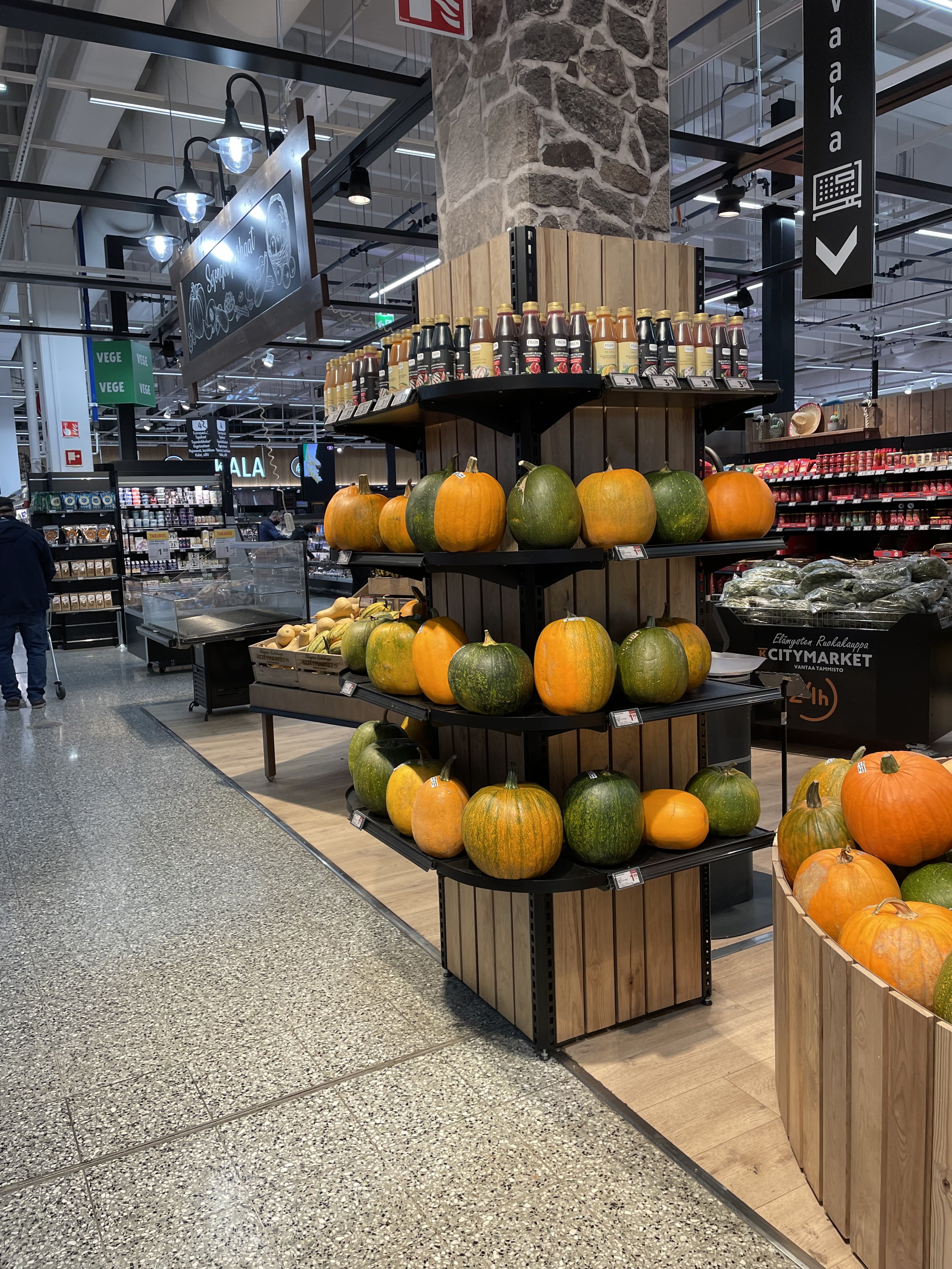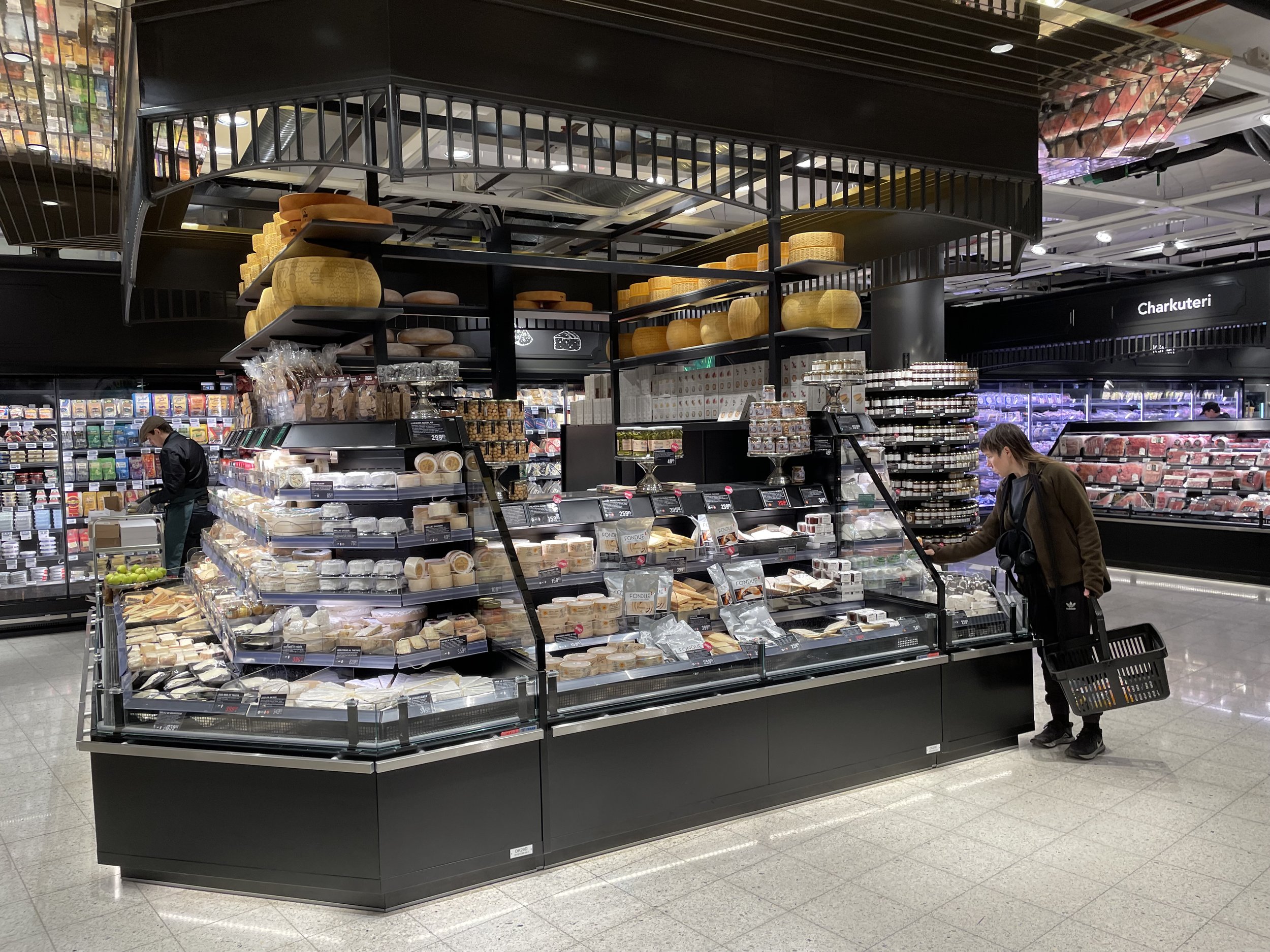Store wars: K-Citymarket Tammisto vs ICA Kvantum Liljeholmen
Last years have seen many beautiful new grocery stores being developed in the Nordics. Some of them stand out from the crowd of great stores. This time we decided to take a comparative look into two outstanding stores, one in Finland and one in Sweden.
The competitors
Sweden is represented by ICA Kvantum Liljeholmen, store of the year in 2021 by the Swedish Food Retailers Federation (Svensk Dagligvaruhandel). The Finnish representative is K-Citymarket Tammisto, nominated store of the month last September by IGD and selected as the best K-Citymarket of 2021. Both of the stores are located in the capital regions and are known for their ability to generate shopper inspiration and great customer experience, not for the low prices.
Both of the stores are operating a shopkeeper model where the parent organization provides the core of the sortiment, logistics, marketing and IT-systems. The shopkeeper then has the responsibility to bring in something extra, such as localised assortment and local marketing.
Numbers
When looking the financial numbers, we can see that both of the stores are very profitable. ICA Liljeholmen puts up a staggering almost 7% profit margin. K-Citymarket also performs well with a 5,36% profit margin. Needless to say these numbers are in the high end of their peers in their countries and internationally.
Profit margins for Ica Kvantum Liljeholmen and K-Citymarket Tammisto
Something extra for the shopping trip
Ica Liljeholmen and K-Citymarket Tammisto have the same aim at selling customers something extra. When this aim is reflected to the sortiment we see the stores stocking up with quite extraordinary products, such as ICA’s unprocessed farm milk sold in containers or fresh moose meat and store grown herbs in K-Citymarket.
Even though both stores are packed with high numbers of SKUs and special products, it is the everyday standard of running the store that makes them both stand out. Both of the stores are tidy, price tags are showing and the product displays are plentiful.
K-Citymarket Tammisto: tomato display
The fresh fruits are presented in a clear and inviting way. Seasons are topically introduced and no overripe or poor quality products can be found.
In ICA Liljeholmen the overripe fruits are being used for the store made smoothies, a very clever way of enhancing responsibility and cutting wastage.
The Smoothie counter in ICA Liljeholmen catches the eye as it is several meters long with clear signs promoting the smoothies. In K-Citymarket Tammisto one can also find fresh store made smoothies, but in a more modest way from a small counter located in the ready meals department.
Ica Kvantum Liljeholmen smoothie counter
K-Citymarket Tammisto smoothie counter
Salad counter in K-Citymarket
Ready to eat highlighted
Ready meals are an important segment to both stores. However they seem to have taken a rather approach to it. With ICA Liljeholmen the fresh ready meals are mostly sold in a buffet-like counters where the customer can easily fill the cups themselves with the food they like.
In K-Citymarket Tammisto the ready meals section is sold from counters where a member of the staff hands out the products. Only ready meal product in a buffet style is fresh sushi, which is prepared in-store. When observing the traffic sushi is generating, one can imagine that the product is bringing a lot of sales and profit to the store.
Strangely ICA Liljeholmen does not prepare sushi in store, even though many other ICA stores operate a sushi kitchen in store.
Beer as a destination category
One of the destination categories in both ICA Liljeholmen and K-Citymarket Tammisto are their beer sections. Packed with a lot of SKUs and local breweries both stores have great beer sections.
K-Citymarket takes beer one step further by operating its own in-store microbrewery called Rosendahls.
The brewery produces annually 30 000 to 50 000 litres of beer. Customers can also order their own personalised beer batches for events such as weddings. Time will tell if running a brewery in a grocery store pays for itself. You can’t blame the K-Citymarket shopkeeper for not pushing innovation.
To summarise
Which of the stores is better? It would be great to declare a clear winner between these two. Both of them do extraordinary work with high operating standards one rarely sees in a grocery store.
For someone working in the grocery industry it is worthwhile visiting both stores.
As for which store is better, it is hard, if not even impossible to say, which one is better than the other. One thing is for sure: both these stores have outstanding operational excellence and ability to renew themselves regularly. These kinds of stores push the industry forward as they keep on innovating with new kinds of customer experience elements.

























































































































































































